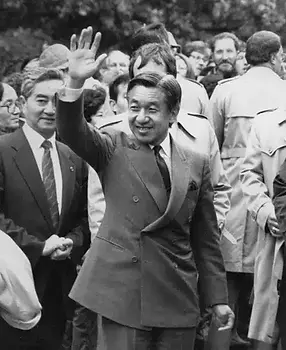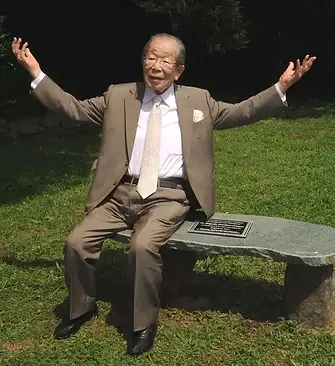Manjiro Nakahama
"The First Japanese in America"
(1827-1898)
In 1843, Fairhaven became the home of the first Japanese person to live in America. The ties of friendship, first formed when a Fairhaven whaling captain rescued fourteen year old Manjiro Nakahama from a small island in the Pacific Ocean, have endured to this day and make Fairhaven a popular spot for visitors from Japan.
Manjiro Nakahama was born in a fishing village in what is now Tosashimizu, Japan, in 1827. From a poor family, he became a fisherman at the age of 13. In early 1841, he and four companions were caught in a storm at sea and shipwrecked on the uninhabited island of Tori Shima (Hurricane Island) in the Pacific. Nearly six months after they had been stranded, the young men were rescued by Fairhaven Captain William H. Whitfield aboard the whaleship John Howland. Manjiro’s four shipmates were set ashore at the Sandwich Islands (later known as Hawaii), but the fourteen-year-old, known to the captain and crew as “John Mung,” chose to return with Whitfield to America.
Manjiro arrived in Fairhaven with Whitfield on May 6, 1843. He spent his first night in America at Whitfield’s home in the Oxford Village neighborhood of town. Because Whitfield was a widower at the time, he sent Manjiro to live for a short time with the Akin family who lived just down the road at 14 Oxford Street. Manjiro was tutored by a neighbor, Miss Jane Allen, and he attended classes at the one room Stone Schoolhouse on North Street.


At the end of May, Whitfield remarried and then purchased a farm on Sconticut Neck. Manjiro helped build the Whitfield farmhouse, now located on Crescent Drive. He continued his schooling at the Sconticut Neck Schoolhouse, which is now a private home.
Though most of Manjiro’s schoolmates accepted him, some of their parents were not as welcoming to the young man from a foreign land. When Capt. Whitfield took Manjiro with him to the Congregational Church, he was told the boy would have to sit in the “negro pew.” Whitfield left the church and took his family to the original Unitarian Church at 32 Washington St., where Manjiro was allowed to sit with the Whitfields.
As he got older, Manjiro took classes in mathematics and navigation with Louis Bartlett in the school he ran at 42 Spring Street. Here the boy became familiar with Bowditch’s American Practical Navigator which he later translated into Japanese.
In 1846, Manjiro took to the sea again, aboard the whaleship Franklin. He spent some time in San Francisco during the Gold Rush before joining another ship and eventually returning to Japan.
Upon returning to Japan, Manjiro was at first imprisoned because Japan forbade its people from leaving. However, his familiarity with American customs and the English language became important when Commodore Matthew C. Perry first arrived to “open Japan” to trade relations with the western world. Manjiro rose to prominence in Japanese governmental circles and was made a samurai. He promoted the acceptance of American ideas and technology. (He has also been credited with introducing the necktie to Japan.)
Manjiro compiled A Short Cut To English Conversation, which became the standard book on practical English at that time. He also became an instructor teaching navigation and ship engineering at the Naval Training School in Yedo (now Tokyo). Twice the Japanese government sent Manjiro on diplomatic missions to America. On the second trip, in 1870, he revisited Fairhaven, staying once again, though this time just overnight, with the Whitfields.
Manjiro Nakahama died on November 12, 1898, in his son’s house in Tokyo.
On July 4, 1918, Viscount Kikujiro Ishii, the Japanese ambassador to Washington, presented to Fairhaven, on behalf of Manjiro’s eldest son Dr. Toichiro Nakahama, a samurai sword as a token of gratitude for the kindness shown to his father by the town. The sword was displayed in a glass case in the Millicent Library, even during WWII. The original sword was stolen from the library in 1977 and has never been recovered. Hearing of the theft, Dr. Tadashi Kikuoka of Seton Hall University located another sword of similar origin and presented it to the town as a replacement.
An interesting sidebar to the Manjiro story is that President Franklin Delano Roosevelt’s grandfather owned a share of the whaleship John Howland, which rescued the boy. In 1933, in a letter to Toichiro Nakahama, the president wrote, “You may not know that I am the grandson of Mr. Warren Delano of Fairhaven, who was part owner of the ship. . . that brought your father to Fairhaven. . . . when I was a boy, I well remember my grandfather telling me all about the little Japanese boy who went to school in Fairhaven and who went to church from time to time with the Delano family.” Warren Delano also purchased and donated the land for Riverside Cemetery where the Whitfield family rests. It’s no wonder Fairhaven felt somewhat torn when the United States and Japan were at war only a few years after that letter was written.

Though the wounds of war took many years to recover from, neither Fairhaven residents nor the Japanese forgot Manjiro’s stay in town in the 1840s. In the fall of 1987, the Fairhaven/New Bedford—Tosashimizu Sister City Committee was formed to further promote international cooperation, friendship and peace between those communities. Crown Prince Akihito, now Emperor of Japan, visited Fairhaven at that time. The group’s name has since been changed to the Whitfield-Manjiro Friendship Society, Inc. The society maintains a museum at Capt. Whitfield’s house at 11 Cherry Street. The house itself is owned by the Town of Fairhaven.
A Manjiro Festival, sponsored by the Whitfield-Manjiro Friendship Society, is held in Fairhaven in early October of odd numbered years. The festival, featuring Japanese and American foods, arts and crafts booths and entertainment, celebrates the sister city relationship and the bond that has survived for more than a century and a half.
THE MANJIRO TRAIL
Created by the Whitfield-Manjiro Friendship Society, The Manjiro Trail consists of eight sites in Fairhaven that are connected to the story of Manjiro Nakahama. Please note that some locations are private homes and are not open to the public.
Download PDF versions of the Manjiro Trail brochure in English or Japanese and find more information about guided tours here: Manjiro Trail.
WASHINGTON STREET MEETINGHOUSE (1832)
WHITFIELD-MANJIRO FRIENDSHIP HOUSE
EBEN AKIN HOUSE (ca. 1765)
14 Oxford Street, Fairhaven
Private Residence, Not Open to the Public
This house was built about 1765 by mariner James Sellers and was owned by Jethro Hathaway before being purchased by Bartholomew Akin in the early 1800s. Bartholomew has been a selectman in the town of New Bedford before the incorporation of Fairhaven and was later a selectman of Fairhaven. His son, Ebenezer Akin Sr. (1784-1870) was Fairhaven’s first tax collector in 1812. Ebenezer Akin Jr. (1817-1905) was Town Clerk, Treasurer and Tax Collector for many years as well as serving as a Selectman and Fairhaven’s Postmaster. His son Bartholomew G. Akin was an artist and the last of the family to live in the house.
In 1843, Manjiro Nakahama boarded at with the Akin family for a short time. Eben Akin suggested schooling for the young man. Next door neighbor Jane Allen, a teacher at the Old Stone Schoolhouse, began tutoring Manjiro, teaching him to read and write.

CAPT. BARTLETT ALLEN HOUSE (PRE-1790)
10 Oxford Street, Fairhaven
Private Residence, Not Open to the Public
Built before 1790, this center chimney Cape Cod style house was the home of Capt. Bartlett Allen, one of four generations of Allen family boat builders to live in the Poverty Point neighborhood between the years of the Revolutionary War and 1915. After commanding two whaling voyages with the Pocahontas, he took over his father Eleazer’s boat building business.
In 1843, Capt. Allen’s daughter Jane G. Allen, a school teacher, tutored Japanese youth Manjiro Nakahama at the home.
LEWIS BARTLETT SCHOOL
42-44 Spring Street, Fairhaven
Private Residence, Not Open to the Public
Lewis Bartlett, who had earlier taught at the Fairhaven Academy, opened his own private school on Spring Street in 1842. Mathematics and navigation were among the subjects taught. Manjiro Nakahama, after gaining a basic knowledge of reading and writing in the district schoolhouses, was enrolled in Bartlett’s school. It was most likely here where he was introduced to The New American Practical Navigator, written by Nathaniel Bowditch, which Manjiro later translated into Japanese.


DR HINOHARA BENCH & PEACE POLE
Cooke Memorial Park
2 Pilgrim Avenue, Fairhaven
Cherry Street and Pilgrim Avenue
In 2007, when the fate of the Capt. William Whitfield house was uncertain, renowned Japanese physician Dr. Shigeaki Hinohara raised funds in Japan to purchase the house and renovate it.
At the time, Dr. Hinohara was 96 years old and still working at St. Luke’s International Hospital in Tokyo and teaching at St. Luke’s College of Nursing, where he had first begun his career 1941. In addition to his long medical career, he is the author of more than 150 books written since his 75th birthday, including “Living Long, Living Good,” which sold more than 1.2 million copies.
On May 7, 2009, Dr. Hinohara, along with 100 Japanese dignitaries, visited Fairhaven for the dedication of the Whitfield-Manjiro Friendship House. The house was donated to the Town of Fairhaven. A few years later, Dr. Hinohara donated a number of flowering cherry trees, which were planted at selected locations in Fairhaven and New Bedford, including at Cooke Park just down the street from the house where Manjiro Nakahama stayed with the Whitfield family.
On August 14, 2012, Dr. Hinohara visited Fairhaven again at the age of 100. At that time, the cherry trees at Cooke Park were dedicated. At the ceremony, Dr. Hinohara said, “. . . Japanese cherry trees were planted on the banks of the Potomac River in Washington, D.C. exactly 100 years ago as a token of friendship between two great nations. In the same spirit, we are happy today to be able to plant 17 cherry trees at meaningful places in Fairhaven and New Bedford. I sincerely hope these cherry trees will grow strong and bloom beautifully and become constant reminders of the spirit of Captain Whitfield and Manjiro.”
The Board of Selectmen then unveiled a stone bench installed to honor Dr. Hinohara’s generosity to Fairhaven. The bench, now located in a landscaped area between the John Cooke and Joshua Slocum monuments, affords a fine view of the harbor and the cherry trees. A Peace Pole stands near the bench with the words “May Peace Prevail on Earth” in four languages.
Dr. Hinohara died on July 18, 2017, at the age of 105.



All historical information on this page was researched and written by Christopher Richard, who served as Fairhaven’s Tourism Director from 1996 to 2024.
